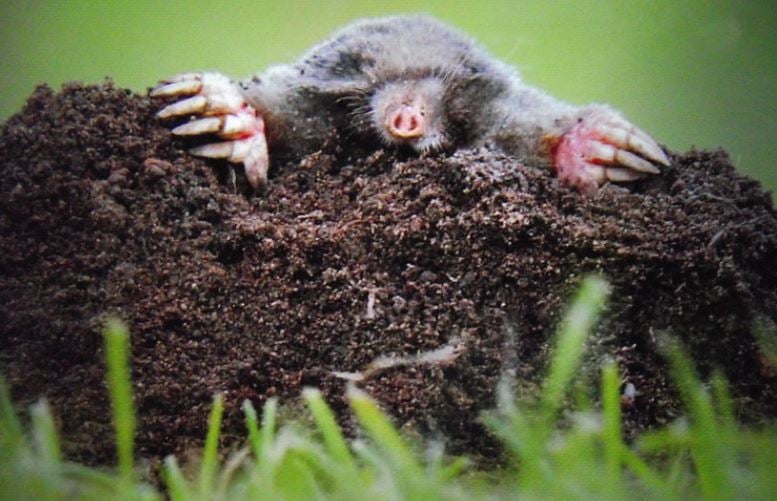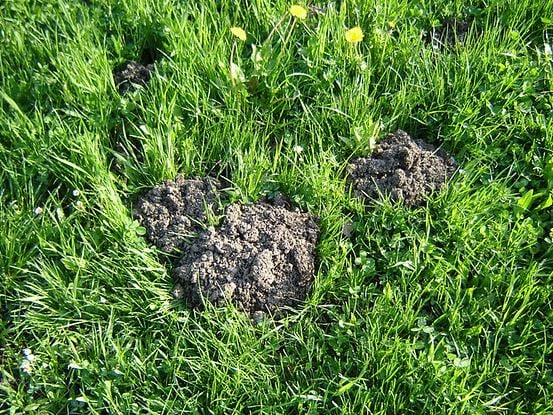Control Those Moles!
 Mole Peeking Above the Soil and Lawn Photo: Ninian Reid
Mole Peeking Above the Soil and Lawn Photo: Ninian Reid  Mole hills like these indicate the presence of a food source like grubs
Mole hills like these indicate the presence of a food source like grubsThese insect-eating, underground dwellers are found throughout the country and prefer moist loamy soils to dig, avoiding sandy or clay soils when possible. Contrary to popular opinion, most moles don't eat plants. Their diet consists mainly of insects, earthworms, beetles and grubs. However, their feeding tunnels in spring and summer are shallow enough to disturb lawns and seed beds. Their tunnels can also create runways for rodents such as voles to find your prized flower bulbs or root crops.
Prevention and Control
- Control grubs in your lawn and flower beds with beneficial nematodes or milky spore. A combination of the two is most effective.
- Some gardeners have had success repelling moles by placing human hair or noisemakers in their tunnels.
- University research has shown that castor oil sprayed on lawns and gardens will repel moles from your landscape.
- Moles rarely stay in the same location for long, and if you're patient they will naturally leave your garden in search of other food sources.
Print this Article:
Get the Dirt
Stay up to date on new articles and advice. Please fill out the information below.
